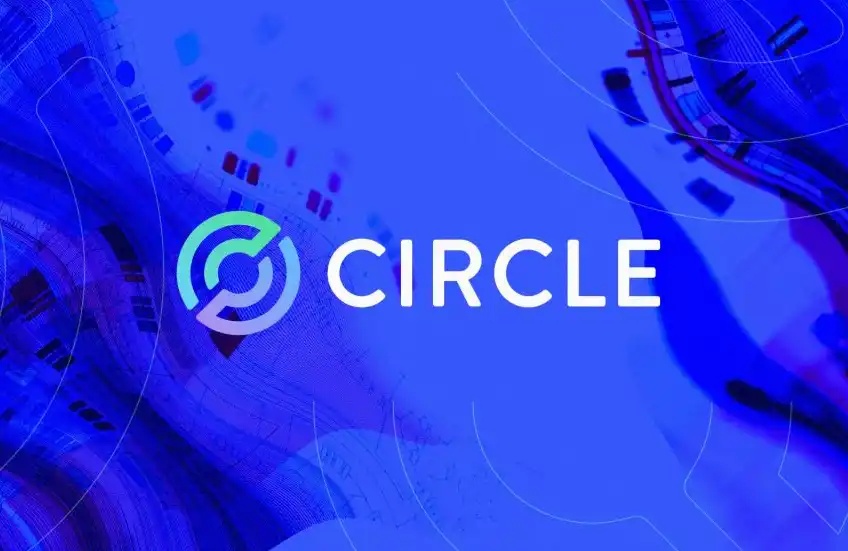Ethereum at a Crossroads
Original Article Title: "IOSG Weekly Brief | Ethereum at a Crossroads #266"
Original Article Author: Jiawei, Analyst at IOSG
Foreword

Source: Jon Charbonneau
The co-founder of dba, Jon Charbonneau, published an article titled "Ethereum's North Star" at the end of last year, pointing out that Ethereum lacks a clear "North Star" goal. Jon also previously tweeted that even within Ethereum, there is no consensus on its core product.
During this current cycle, discussions about ETH's underperformance in terms of price have been ongoing. Overall, ETH's price is not only a reflection of market sentiment but also a key factor in whether Ethereum can unify the community's vision, balance decentralization and performance, and solidify its position as a leading smart contract platform.
Inspired by the above article, this article will discuss some of the issues the author believes Ethereum is facing.
ETH price - It does mean something
In this cycle, we have seen the ETH/BTC exchange rate hit multi-year lows, while SOL/ETH continues to reach new highs, becoming a major factor in Ethereum's criticism by the community.
The tech geeks at the Ethereum Foundation are averse to the community's dissatisfaction with the ETH price, seeing them as a bunch of short-term speculators. Indeed, protocol design should not be price-driven, but avoiding price discussions altogether is also a poor display. This section discusses the importance of ETH price.
ETH price is directly related to EF's runway
From the EF's 2024 report, as of October 2024, the EF's total assets are approximately $9.702 billion, including $7.887 billion in cryptocurrency assets (99.45% in ETH) and $1.815 billion in non-crypto assets.
If the burn rate remains at $130 million per year and the ETH price remains stable, the current treasury can sustain for about 7.5 years. A decrease in ETH price will shorten the actual runway, while an increase will extend it.
A burn rate of $130 million is an exaggerated figure. Previously, the community also criticized the EF's redundant staff (about 200 people), with only 35% being technical personnel. Aave founder Stani Kulechov proposed reducing the burn rate to $30 million and downsizing to 80 people.
Protocol Security
The ETH price directly impacts the attack cost under PoS consensus. Of course, the actual attack also needs to consider geographically distributed validation nodes and the Slashing mechanism, but the price remains a key factor.
After Ethereum adopts the PoS mechanism, the ETH price directly affects the stakers' earnings. If the ETH price drops, actual earnings will also shrink, potentially leading to staking node exits and a decrease in network security. Currently, Lido's TVL is approximately $20 billion, a decrease of nearly 50% from the peak of $40 billion in December last year. The SOL/ETH trading pair saw an increase of over 3 times last year, but SOL staking rewards are still about twice that of ETH, which may drive many stakers to shift from Ethereum to Solana in the next cycle.
Confidence of Ecosystem Participants
Needless to say, the price is the result of ecosystem participants (developers, users, investors, and various roles) voting with their feet. In this cycle where mainstream sentiment generally does not favor Ethereum, poor price performance may trigger a negative feedback loop.
Early Ethereum ecosystem developers, co-author of EIP-1559 eric.eth, also wrote that with Vitalik fading away, the EF is gradually becoming disconnected from the community, and opacity is intensifying. Faced with the expansion of rivals such as Solana and the EF's "anti-competition" attitude, he received many questions from early Ethereum developers about why they should stay in this ecosystem.
ETH's price is a mirror and should receive the EF's attention and respect.
Decentralization is a spectrum, and so is competition
Different people, from different standpoints, will inevitably have different understandings of decentralization. A memecoin trader on Solana does not necessarily need a blockchain that can withstand nation-state-level attacks; they can see the meme coin's chip distribution, dev runs, and whale addresses on-chain, which is sufficient for them.

Source: dba
Likewise, competition and non-competition are also relative. The author believes that Ethereum's competition mainly lies in the following two points.
· As a Store of Value Asset
In a previous Ethereum staking report, the author mentioned that ETH serves as a reserve asset for various protocol DAO treasuries, collateral for CeFi and DeFi, as well as in NFT transactions, MEV pricing, token pairs for exchanges, and other use cases, serving as a unit of account and a medium of exchange, with its value persisting over time and space. Therefore, it should be considered a store of value asset.
However, this is only within the Ethereum ecosystem. Broadly speaking, when looking beyond the ecosystem, Ethereum's store of value attribute still significantly lags behind that of Bitcoin.
For example, in terms of positioning, since its inception, Bitcoin has been associated with narratives of "digital gold" and "inflation-resistant scarce asset." Bitcoin's core function has been clearly defined as a store of value, making it easier for the mainstream market and the public to understand.
On the other hand, Ethereum, as a smart contract platform, derives its value from gas fees, staking rewards, on-chain ecosystem applications, and more. This complexity dilutes its store of value attribute, and the public tends to view it as a "technology token" or a "utility token" rather than a pure store of value tool.
In terms of supply, Bitcoin has a fixed total supply of 21 million coins, gradually reducing its inflation rate to zero through a halving mechanism. Ethereum's supply may have a lower actual inflation rate compared to Bitcoin after the implementation of EIP-1559 and PoS. However, due to recent network inactivity, it has gradually returned to inflation and continues to fluctuate with network activity.
Compared to Bitcoin, Ethereum's complex functionality and mechanisms require a higher cognitive threshold. Additionally, institutional investors (such as MicroStrategy and Tesla) publicly holding Bitcoin as a reserve asset have strengthened its store of value legitimacy.
Therefore, currently, Ethereum's store of value attribute is difficult to compete with Bitcoin. Ethereum's core positioning is as a smart contract platform.
· As a Smart Contract Platform
As a smart contract platform, Ethereum is facing fierce competition from Layer1 solutions like Solana and Sui. From a data perspective, although Ethereum holds an absolute advantage in stablecoin issuance and TVL, key metrics such as daily transaction volume, daily active addresses, and transaction counts show signs of decline.

Source: Artemis
Looking at the fund flows over the past year, protocols such as Base, Solana, and Sui have captured significant inflows, while Ethereum has seen outflows of nearly $8 billion. Transactions within the Ethereum ecosystem are mostly concentrated on Base and Arbitrum, aligning with the roadmap centered around Rollups. However, the subdued activity on Layer 1 may somewhat affect the market's pricing of ETH.

Source: IOSG
Between platforms, developers, apps, and users, a feedback loop is essentially formed as described above. A good platform attracts high-quality developers, developers build good apps, apps attract users, and users drive the platform's prosperity and growth.
Due to the different technical development paths of Ethereum and Solana, developers often need to choose between the two platforms. Therefore, at the "smart contract platform" level, the two are certainly in a competitive relationship.

The solanaroadmap.com website is so concise that it only consists of four words, abbreviated as IBRL. However, the current Solana is not limited to high performance. In addition to the technical IBRL, Solana's culture and attention capture also present differentiated competitive advantages.

The author once asked why not launch a memecoin on an Ethereum L2, as L2 also features low cost and high throughput. The answer received was "culture." In a general overview of user profiles, it is widely believed that Ethereum users are more oriented towards "old money" in DeFi mining, while Solana represents the rapid flow and redistribution of fresh blood and capital.
New things often capture attention better when compared to old things. Many founders discussed during this period have chosen to build consumer applications on Solana. Apart from technical reasons, they mostly mention "attention" — in this period, more users are focusing on Solana.
In a market full of various projects and in a period where attention is extremely scarce, founders will do everything possible to increase their project's exposure and let the market discover their product. On Solana, there is also more hot money and a more seamless user experience because every additional step when you want others to use your product adds friction and obstacles.
Hindsight Is 20/20 - Ethereum Foundation's Choice
Is a laissez-faire approach suitable for Ethereum in a highly competitive environment?
The community's reaction to Aya's appointment as Ethereum Foundation Chair has been mixed: Critics point out that during her 7-year tenure, Ethereum's development progressed slowly, developer support was inadequate, and the token price was lackluster, all of which were directly tied to her leadership; her advocated "philosophy of subtraction" and decentralized governance have been criticized as "laissez-faire," leading to EF's failure to proactively coordinate ecosystem resources, in stark contrast to the efficient operation of the Solana Foundation.
These evaluations are difficult to untangle in a short period of time and are not within the scope of this article, but they to some extent reflect the community's dissatisfaction, serving as an outlet for pent-up emotions.
EF's role has never been to control or own all aspects of Ethereum. Instead, our responsibility—our accountability—lies in upholding Ethereum's values. Through both our actions and our inactions, we are accountable for ensuring that Ethereum remains resilient, not just as a network, but as a broader ecosystem of people, ideas, and values—never reduced to a single organization's product.——Aya Miyaguchi
On her inauguration day, Aya released an article titled "A new chapter in the infinite garden," indicating that the foundation's role is that of a "gardener," not a "controller," supporting the ecosystem through nurturing client diversity, research coordination, community activities, etc.; advocating for adaptive growth, decentralized leadership, and rejecting corporate expansion; believing that Ethereum needs to maintain its original vision as the "world computer."
The author believes that discussing values and ideals is beneficial during a growth cycle; however, if the system is in a decline phase and unable to generate increments, this kind of "grandiloquence" will appear weak and unconvincing, failing to resonate with the masses.
The fundamental premise, practice, and development of the values of becoming the "world computer" rely on someone building on the ecosystem and being willing to follow and promote these values. The prosperity and growth of the ecosystem are necessary conditions.
Han Feizi pointed out in the "Five Vermin" that the essence of Confucianism's "using culture to disrupt laws" lies in empty talk about benevolence and righteousness, ignoring real contradictions. In a situation of limited resources, empty talk about benevolence and righteousness can lead to a disconnect from actual needs, requiring reliance on practical means such as "law, technique, and power." When Confucius traveled to various states, only the state of Wei (which had a relatively developed economy) briefly accepted his idealism. In states like Song, Chen, and Cai, which were plagued by frequent wars, Confucius's idealism was snubbed due to a lack of material foundation.
Recently, when the community questioned the Ethereum Foundation's continued sale of ETH and failure to use financial management tools like staking to sustain the runway, the Foundation once again sold a small amount of ETH on the same day. In a situation where community dissatisfaction was spreading, this move appeared quite ill-timed. Vitalik stated that if the Foundation staked ETH, it might be forced to make an "official choice" in a contentious hard fork event, violating Ethereum's decentralization principle. This overly vague reason also proves untenable and fails to address the community's core concerns.
Building on the above discussion, whether from the perspective of the weakness in various data aspects of its positioning as a "smart contract platform" or the slump in ETH's price aspect as a "store of value" asset, Ethereum appears somewhat inadequate. At this juncture, choosing to persist in a "do-nothing" approach may not necessarily be wise.
"Ethereum is an Ecosystem, Not a Company"
In a Chinese AMA on February 27, Vitalik emphasized that Ethereum is not a company but an ecosystem.
I think Ethereum is a decentralized ecosystem, not a company. If Ethereum becomes a company, we will lose much of the reason for Ethereum's existence. Being a company is a company's role. —Vitalik Buterin
I agree that Ethereum should not be seen as a company because operating like a company implies, to some extent, operating for profit, which conflicts with Ethereum's longstanding positioning. However, the result of operating in a non-corporate manner is that it is challenging to establish metrics to measure the system's efficiency, and the system's goals are divergent rather than optimized towards a specific point or direction.
Ironically, although the Ethereum Foundation does not view Ethereum as a company, the public's pricing and valuation of Ethereum still tend to lean towards a corporate perspective, referencing metrics such as active addresses, transaction volume, protocol revenue, making it difficult to achieve the simplicity of Bitcoin's "digital gold" narrative.
Looking at a series of fundamental data such as protocol revenue, Ethereum no longer has a strong momentum. For example, due to the downturn in Layer 1 activity leading to a significant decrease in ETH burned, ETH has ended nearly two years of deflation and returned to inflation, with an annual inflation rate of 0.72%.

On the technical development front, Aya wrote in the article: Instead of controlling, we steward All Core Dev calls to create space for technical decisions to emerge through community wisdom. While a coordination-oriented approach sounds good in principle, it can be overly idealistic. Coordination-centric methods often face many challenges in practice, such as inefficiency and high friction. With everyone having their own opinions and no overarching decision-making structure, execution becomes difficult.
Of course, this article does not clarify right or wrong, nor does it criticize the EF's approach. Instead, it attempts to present the author's perspective and reasoning, pointing out the interests at stake. In conclusion, the author believes that the EF needs to focus on the practical, be realistic, identify problems, listen to the community's opinions, and take action.
Conclusion
Crypto has different themes in different periods. In this period dominated by the mainstream narrative of Bitcoin ETF and the Solana memecoin craze, Ethereum is clearly not favored by the market. Ethereum has strong values and idealism, but these superstructures need real use cases and community support.
By maintaining these values, what can Ethereum do at this stage?
Accelerate development progress, focus on scaling, address cross-L2 interoperability issues, make Ethereum technically usable enough. Attract long-term oriented developers, and more. Education. ethereum.org has always done a great job of multilingual support. Ethereum is unlikely to engage in political lobbying, but global education is essential. EF needs reform to achieve governance transparency and community oversight, balancing idealism with market demand.
As a long-time Ethereum enthusiast, I am saddened by the current situation but also excited to see challengers like Solana impact Ethereum's position—the story of newcomers challenging established "winners" in Crypto is constantly repeating, which is equally inspiring.
Welcome to join the official BlockBeats community:
Telegram Subscription Group: https://t.me/theblockbeats
Telegram Discussion Group: https://t.me/BlockBeats_App
Official Twitter Account: https://twitter.com/BlockBeatsAsia
 Forum
Forum OPRR
OPRR Finance
Finance
 Specials
Specials
 On-chain Eco
On-chain Eco
 Entry
Entry
 Podcasts
Podcasts
 Data
Data


 Summarized by AI
Summarized by AI






